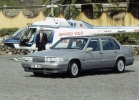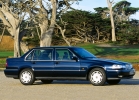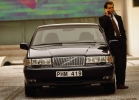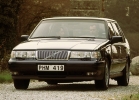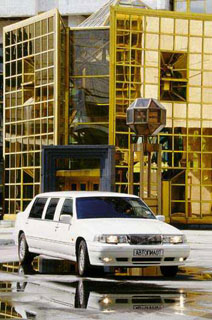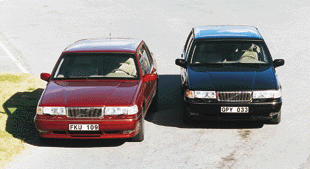Test drive Volvo 960 1994 - 1997 sedan
The masculine beginning
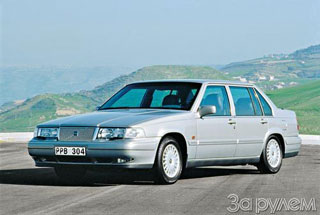 Who knows what the Russians liked the cars with the symbol of Mars on the radiator grille: prestige without raid crime, a spacious salon, roomy trunk, high passive safety or adaptability to our latitudes? For many years, they are in Russia in Russia from Murmansk to the Caucasus and even at a respectable age, in demand, relatively slowly losing in price. Today, models 940 and 960, which have replaced the 700th series, occupy a significant part of the market. For a detailed story about the features of these machines and the costs of their maintenance, we turned to specialists - to the dealership of the Independence Service Center.
Who knows what the Russians liked the cars with the symbol of Mars on the radiator grille: prestige without raid crime, a spacious salon, roomy trunk, high passive safety or adaptability to our latitudes? For many years, they are in Russia in Russia from Murmansk to the Caucasus and even at a respectable age, in demand, relatively slowly losing in price. Today, models 940 and 960, which have replaced the 700th series, occupy a significant part of the market. For a detailed story about the features of these machines and the costs of their maintenance, we turned to specialists - to the dealership of the Independence Service Center. P4, P6 or V6
The range of engines of the 900th series is very diverse. A very small part of the cars of the first issues received a French heart - the V -shaped six Renault (Volvovsky B280F index). But the motor magnificent in power and elasticity really does not like overheating and is able to put a large pig to the owner: he is extremely laborious and roads in maintenance and repair (replacing wet sleeves takes more than one norm-day!), And even official dealers have the right to disturb him.
In -line sixes also do not like mud and fluff of the radiator and fluffy and demanding on candles and clums. With good care, they regularly serve more than 300 thousand km. With a bad, by 250 thousand, oil consumption can be transplanted for 400 g per 1000 km, which usually indicates wear of the cylinder-piston group.
The simplest and most unpretentious are four (mainly installed on Volvo 940). They often nurse more than 500 thousand km. But not every owner will arrange, to put it mildly, sedate acceleration. However, a large sedan should ride with dignity, it does not apply to his owner to fuss.
The average life expectancy of a high -pressure turbocharger (FT index) is 150-200 thousand km. Wear will manifest itself with a sharp increase in oil consumption. In order for the knot to work longer, the car can be equipped with a turbotimer (ZR, 2003, No. 5, p. 187). Charges with a boost of low pressure (GK) are manifested only with large runs (for 200 thousand km). There were two fuel pumps until 1994: one in the tank, the other under the floor. Since 1995, the only pump settled in the tank, and the system as a whole has become more reliable.
On engines with balancing shafts, it is supposed to change the belt of their drive simultaneously with the timing belt. With the apparent simplicity of the operation, it is dangerous to trust the non -core service. The fact is that the belt tension is adjusted to the cold and checked for hot (after warming up the engine). The discrepancy with the given parameters threatens with a cliff. At the same time, the torn belt will inevitably fall under the timing belt, he, in turn, will break off - and the order -order for picking valves from the pistons is provided.
It is better to refrain from buying a diesel engine. They do not like and are not waiting for them at the service: for servicing and repairing, an expensive specification is needed. And the branded service stations in imported passenger diesel engines in Russia is still looking for.
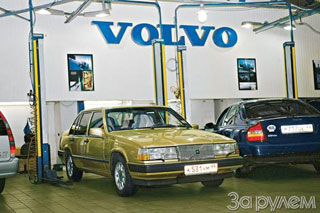 Nivamat is not so terrible
Nivamat is not so terrible The clutch resource is quite large: from 90 to 170 thousand km, depending on the operating conditions. On a mechanical box M90 in 1995-1997. There were problems with accelerated wear of synchronizers, since 1998 they have been resolved. If the machine gun on model 960 suddenly turned into an emergency mode, most likely not a box, but a selection selector, its contacts located under the floor were oxidized. Of course, the state of oil in the automatic transmission must be regularly checked (color, smell, extraneous inclusions).
The front suspension of models 940 and 960 is similar. Since 1995, shock absorber racks have been unified with Volvo 850. On the 940th they serve 60-120 thousand km, the 960th-less: 40-80 thousand (due to the larger engine mass). The weak point of the 960s is the racks of the reptile stability stabilizer. Their ballic hinges are enough for 30-40 thousand km, and on bad roads and less. But the silent blocks of the racks on the 940s serve more than 80 thousand km. The front brake discs of the 940th is enough for 70-100 thousand km, the rear go 30% longer. In the 960s, their resource is approximately 25% lower. Flood consumption - an average of three sets per disc. There are no complaints about the ABS work.
The elastic coupling and a cardan gear suspension is 120-140 thousand km (the latter is changed with its protective rings). Cardata hinges, the gearbox of the rear axle and the semi -shafts - more than 300 thousand km.
The rear suspension Volvo 940 - with a traction of Panara: simple, unpretentious and cheap in maintenance. The same was on the 960s of the station wagons until 1994. Multilink (M-Link) was installed on sedans-a complex multi-link with 30 (!) Silent blocks. The consumer pays for the Union of Comfort with Manage. If half of the rubber bands is torn or exfoliated, given the cost of the bulkhead, it is cheaper to change them in skill.
The rear suspension M-Link Volvo 960 has a system for maintaining a permanent clearance. Until 1994, Nivamat self -heated shock absorbers were responsible for this. The first sign of their malfunction: in the parking lot, the back of the car sags like Citroen, but does not rise with starting the engine, but only during the trip. Replacing them is no more difficult than ordinary ones, but the price bites. Do not wait until the pumping stops working at all: the very numerous silent blocks will be worn out of the excessive movements of the body. In 1994, a multilink-2 appeared, in which a transverse spring made of composite material came to replace the springs (springs of different thicknesses on sedans and station wagons). Some of the cars began to be equipped with ordinary shock absorbers, and the clearance was laid on the same spring, additionally strengthening it. With reasonable loads, there are no complaints about its work.
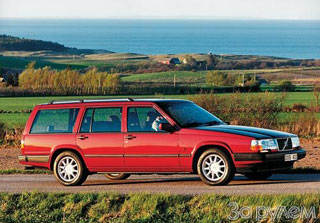 GEOGRAPHY LESSON
GEOGRAPHY LESSON It has become a good tradition to pack the prestigious car for the Russian market. Volvo is no exception. In addition, some of the machines were adapted to low -grade gasoline and not equipped with a neutralizer; The characteristics of springs and shock absorbers were also distinguished.
But copies from hot countries sometimes turn out to be completely inappropriate for Russia: with two air conditioners, but without a stove - and there is not even a place for it. But the polar performance does not provide for the air conditioner. You can determine for which market the car is designed by a two -digit code on the top line of the identification plate: 23 - Eastern Europe (including Russia), 10 - Sweden, 18 - Germany, 20 - Belgium, 21 - Holland, 30 - USA.
Volvo 960
Code 23: a car for Eastern Europe, which means for Russia.
Duplicate VIN - on the right central rack.
Naked metal on the arches does not rust ...
... But from below, spray -haireds oh how needed!
The tubular engine protection on the Volvo 960 has been included in the package for Eastern Europe.
Decoding of engines codes
The first letter is the type of engine: B - gasoline, D - diesel. The next number is the number of cylinders (there are no four -cylinder). The second and third numbers are a working volume with an accuracy of 0.1 liters. The fourth is the number of valves per cylinder: 0 or 2 - two, 4 - four. Subsequent letters - modifications: the presence of a turbine of high or low pressure, neutralizer, etc.
Evolution Volvo 940 and 960
1990. The Volvo 940 and 960 are represented. Visually, the 960 model is distinguished by moldings with shiny inserts, a long aluminum hood (there is no shelf near the windshield), outlines of the front of the body. Engines 940: in -line fours 2.0 and 2.3 liters with and without turbocharges, in -line turbodiesel six 2.4 liters in numerous modifications. In 960, in -line six 2.9 l (204 hp) were also installed.
1993. Serially installed ABS.
1994. The outdoor temperature sensor appeared. The design of the heater, the fuel pump is changed.
1995. The new base engine for Volvo 940: P6, 2.5 l, 170 l. With. There was a three -sided gearbox of the M90, the front suspension design was changed, a composite spring suspension is introduced into parts of 960 models.
1996. Presentation of the successors of the model 960: S90 and V90. But the 900th series was released in 1997.
Anatoly Sukhov. Photo: George Sadkov, Anatoly Sukhov and Volvo
Source: The magazine "Driving"

